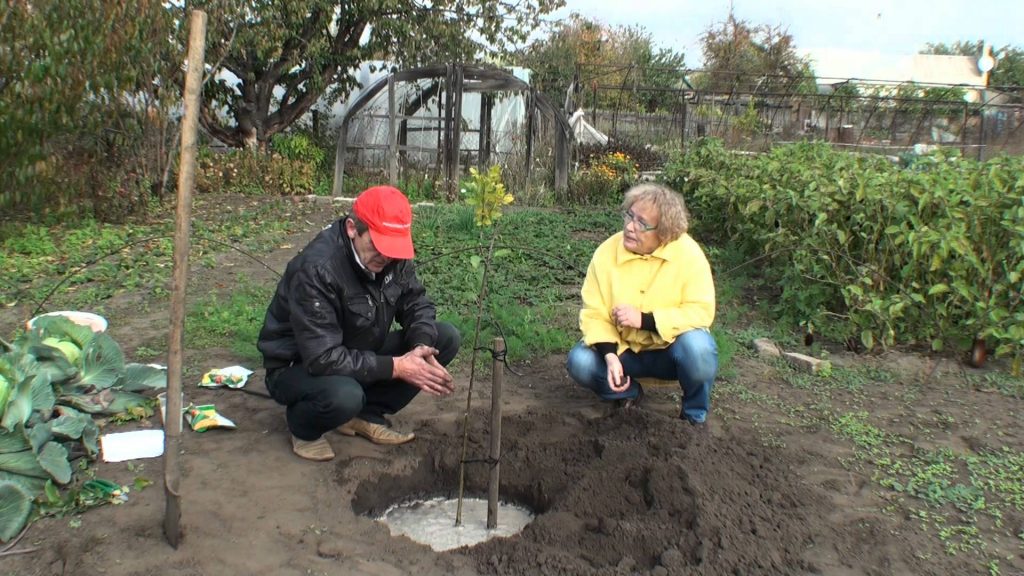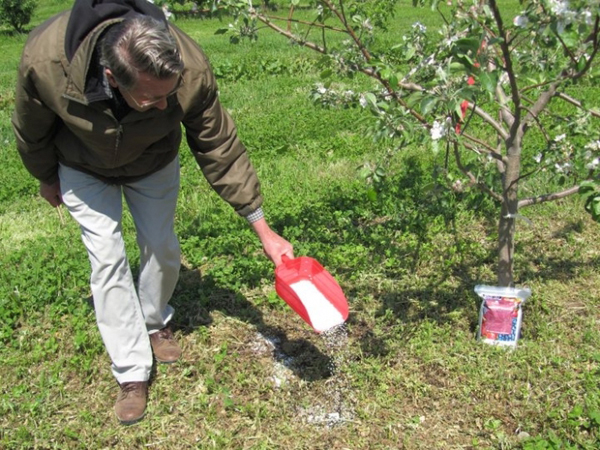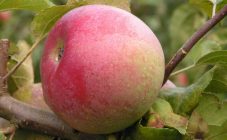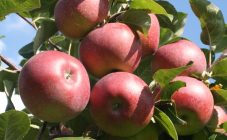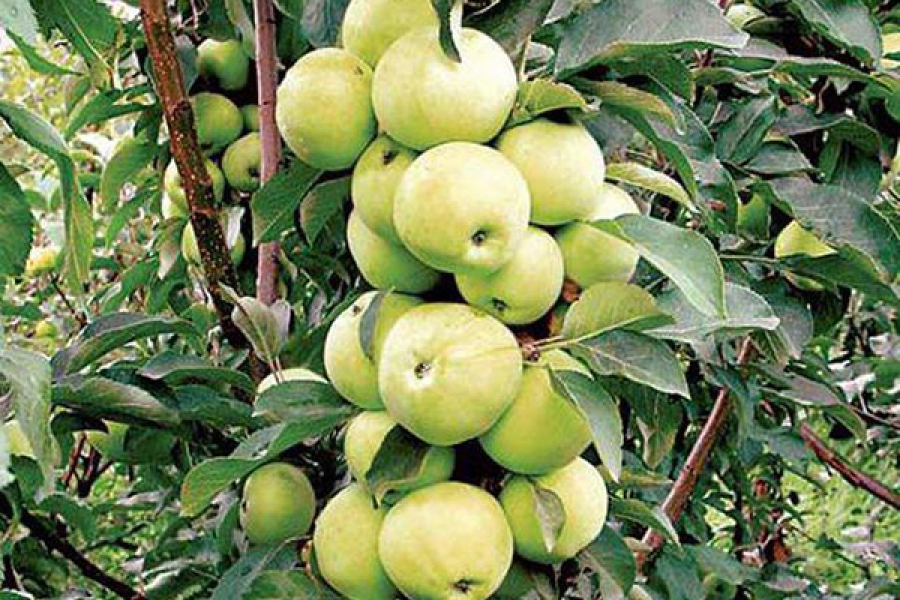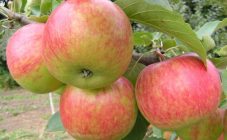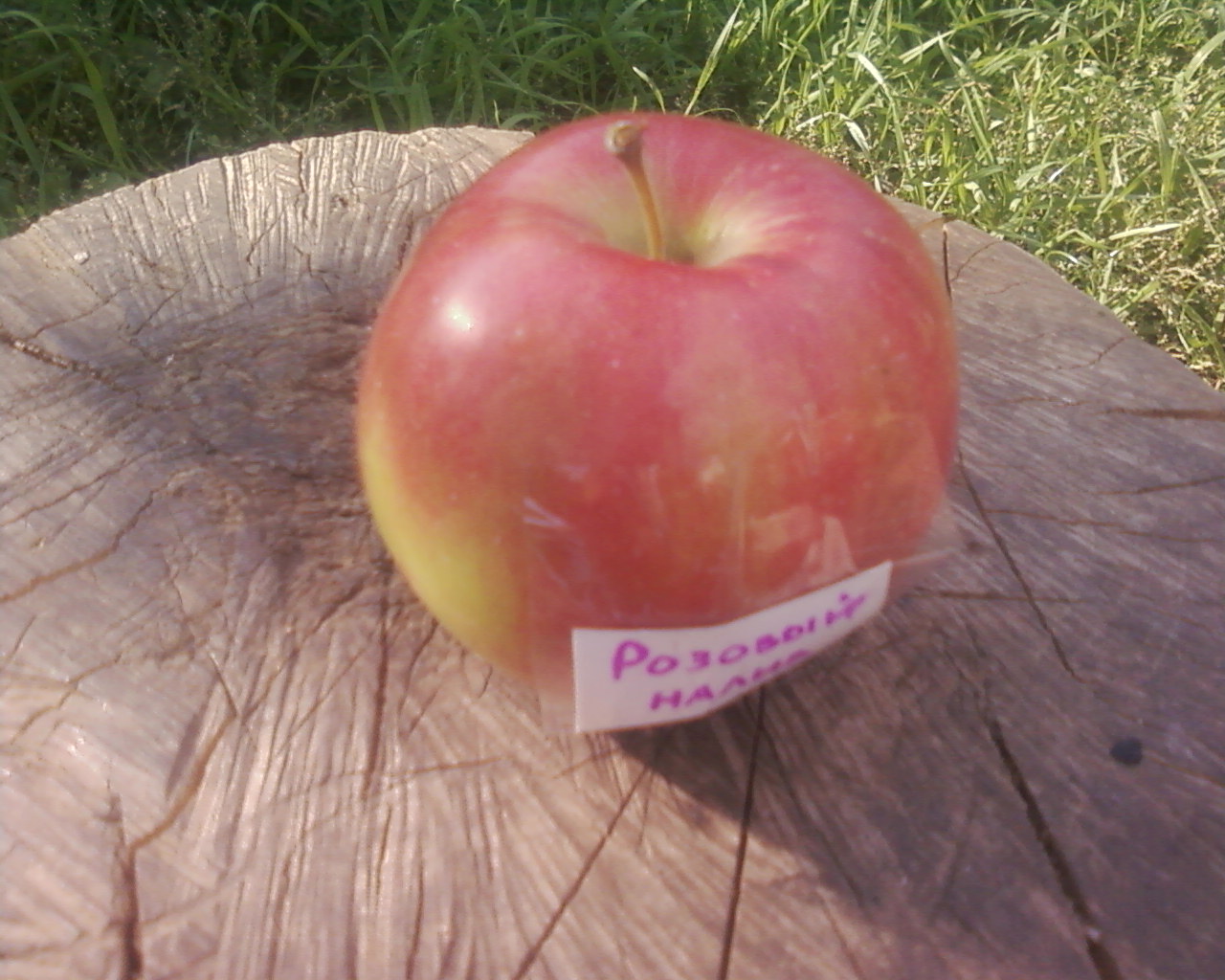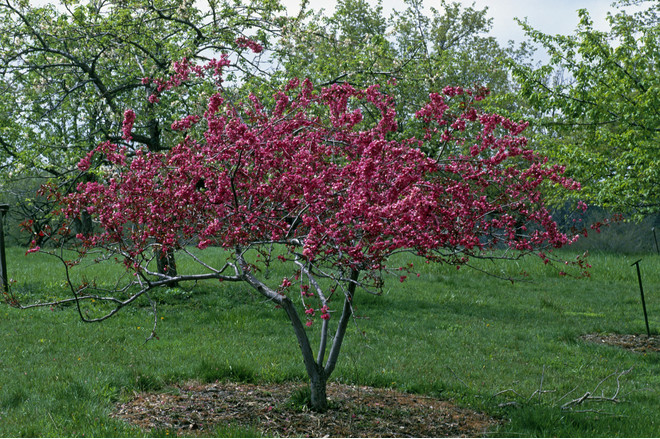It's hard to imagine a household without an apple orchard. This crop is suitable for growing in all regions, including the Moscow region. Apples are not only delicious but also extremely healthy. New varieties of apple trees are very popular, which are distinguished by a late ripening period and have good characteristics. Thanks to this, throughout the winter there will always be fresh apples on the home table. One of them is the Ligol apple variety.
Apple tree Ligol: description and characteristics of the variety
The variety was bred in 1972 by Polish breeders by crossing Linda and Golden Delicious.
Trees are capable of reaching a height of 3.5-4 m by 10 years. They have a columnar crown, which is characterized by medium thickening. The branches in relation to the trunk are located at an angle of 55-80 degrees.
The Ligol apple tree is characterized by a high index of frost resistance. It is also worth noting the high immunity to infection with diseases such as scab and powdery mildew.
Apple trees are of the early maturing type. The first harvest can be harvested within 3 years after planting the seedling. After 10 years, one tree can produce up to 16 kg of fruit. From one young tree, you can get up to 6 kg of Ligol apples. This variety of apple trees has a mixed type of fruiting.
Ligol apples have an excellent presentation. The weight of one apple reaches 250-350 grams. They are round in shape with ribbing near the calyx. A dense skin is formed on them, which has a greenish color with gloss. Juicy and tasty, grainy pulp has a slightly yellowish tint. Apples have a high rate of transportability. They can be stored for 6 to 8 months after harvest. For this, it is better to choose a cool place to which there is no light access. Apples can be eaten not only fresh, but also used for making apple jam, compotes and juice.
Features of growing and care
Planting seedlings is allowed both in spring and autumn. If you do this in the fall, then before the first frost. This will give the seedlings time to settle down in a new place and get stronger. It is better to purchase varietal material in specialized stores. When choosing a place for planting, it is recommended to give preference to those where there is fertile soil, which has high levels of moisture capacity and air permeability. Trees grow best on loamy or sandy soils.
As for the illumination of the site, Ligol apple trees do well in slightly shaded places. This only has a positive effect on their fertility.
Previously, the site is dug up, weeds are removed. It is a good idea to additionally fertilize the soil before planting. For this, you can use organic and complex fertilizers.
A pit 1m X 80 cm is prepared for planting a seedling. A nutrient mixture is laid at its bottom, which consists of fertile soil and wood ash. Before planting, the roots of the seedling are gently straightened. The pit is filled up and the soil is compacted.
Up to 2 buckets of water are poured under a newly planted tree.
Maintenance measures include mandatory pruning of trees. This will help to increase yields and form a beautiful and regular tree crown.
The first pruning should be carried out even before the start of active sap flow (March - April). This removes weak and thin branches. Pruning is not recommended in the summer. This is due to the fact that in summer the movement of sap along the tree is very active. In addition, the foliage accumulates many nutrients necessary for the growth and maturation of fruits. In the fall, pruning is carried out before the first frost begins. At this time, dry, diseased and thin branches are removed.
All cuts are carefully processed with garden varnish.
Watering the apple orchard is also necessary according to the rules. The first time the trees are watered immediately after flowering. The second time the apple trees are watered when the fruits reach medium size. The third time the trees need to be watered after the harvest has been completed. For the last time in the season, apple trees are watered after dropping their foliage. Watering is not recommended during the flowering period. This can adversely affect the formation of the ovary. You should not do root watering of apple trees. This method can provoke the development of tree bark diseases.
To get a good harvest, apple trees need to be fed on time. In the spring, top dressing is done in April. For this, means such as urea, ammonium nitrate, humus, nitroammophoska can be used. They are applied around the tree trunk after loosening the soil. Secondary, the apple tree is fed during the flowering period. You can use such solutions: superphosphate and potassium sulfate, chicken droppings, slurry, urea. Up to 4 buckets of solution with fertilizers are applied under an adult tree.
In the spring, 2 feeding of apple trees is carried out. The second time is performed at the end of flowering. For feeding, you can use the following compositions: nitrophoska, sodium humate in an amount of at least 2 buckets for each tree. You can also achieve good results through spring foliar feeding. To do this, the leaves and branches can be sprayed with urea. Thanks to this, nutrients will spread through the leaves along the tree.
In the summer, apple trees are fed with fertilizers that contain potassium and phosphorus. At least 14 days should pass between several dressings. With the onset of autumn, apple trees can be fed with urea. No more fertilizer is used. Otherwise, the apple orchard will not have time to prepare for winter.
Strong winds and frosts in winter can damage the bark of a tree, leading to its death. Such an apple tree will no longer be able to bear fruit normally. The yield can drop by 2 times. In order to avoid such an unpleasant situation, the apple trees need to be prepared for winter. Preparatory work consists in carrying out the following manipulations:
- remove all fallen leaves. If this is not done, pathogenic microorganisms will accumulate in them, which will provoke infection of trees with fungal diseases;
- whitewash the lower part of the trunk with lime. This will help protect trees from insects and spring sun rays;
- remove moss and growths from the bark;
- mulch the near-stem part of the soil with straw, hay or sawdust;
- wrap the trunk with a covering material (agrofibre, plastic film, roofing material);
- after the snow falls, pour a large pile under the trunk and compact the snow. As a result, the bark system will be reliably protected from frost;
- protect trees from rodents. For this, you can use needles, branches of thorny cultivated plants, willow or walnut. The lower part of the trunk is lined with these branches, and then it is wrapped with covering material. You can also wrap the outside of the material with several turns of barbed wire. You can also save trees from rodents by laying poisonous mixtures in the garden designed to fight mice and rats;
- the covering material can be removed only after the spring frosts have passed.Otherwise, all measures to protect the apple trees will be in vain.
Following these simple guidelines for apple orchard care will ensure that the trees in it are healthy and the harvest is rich.

